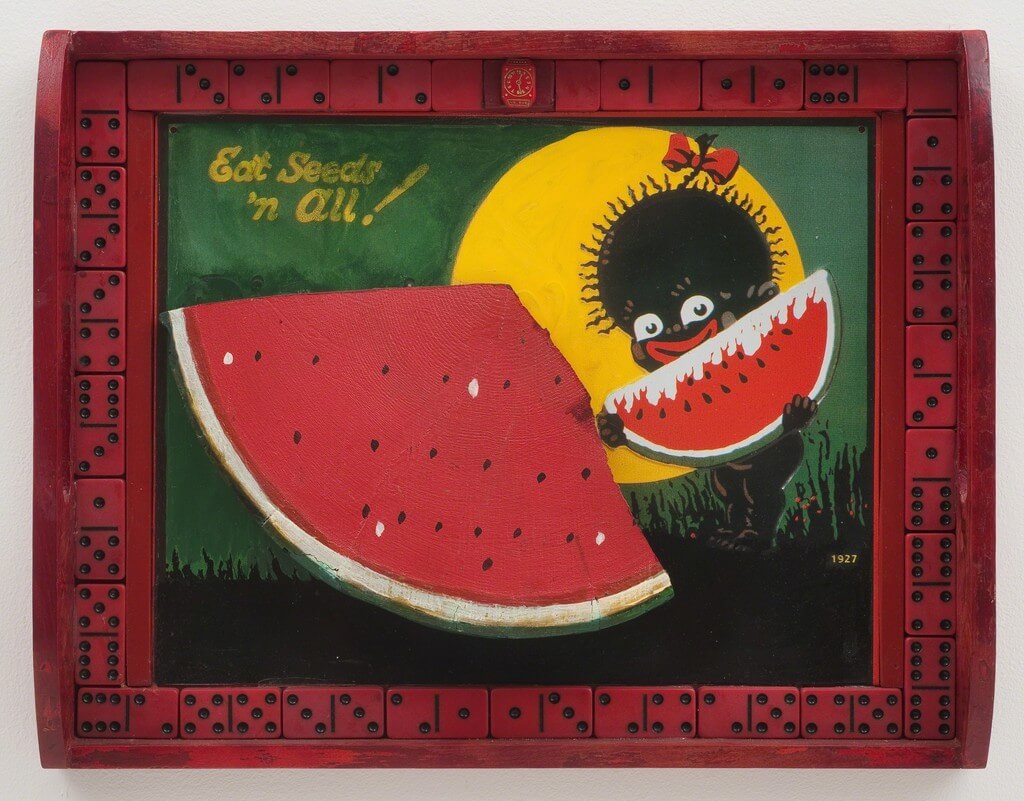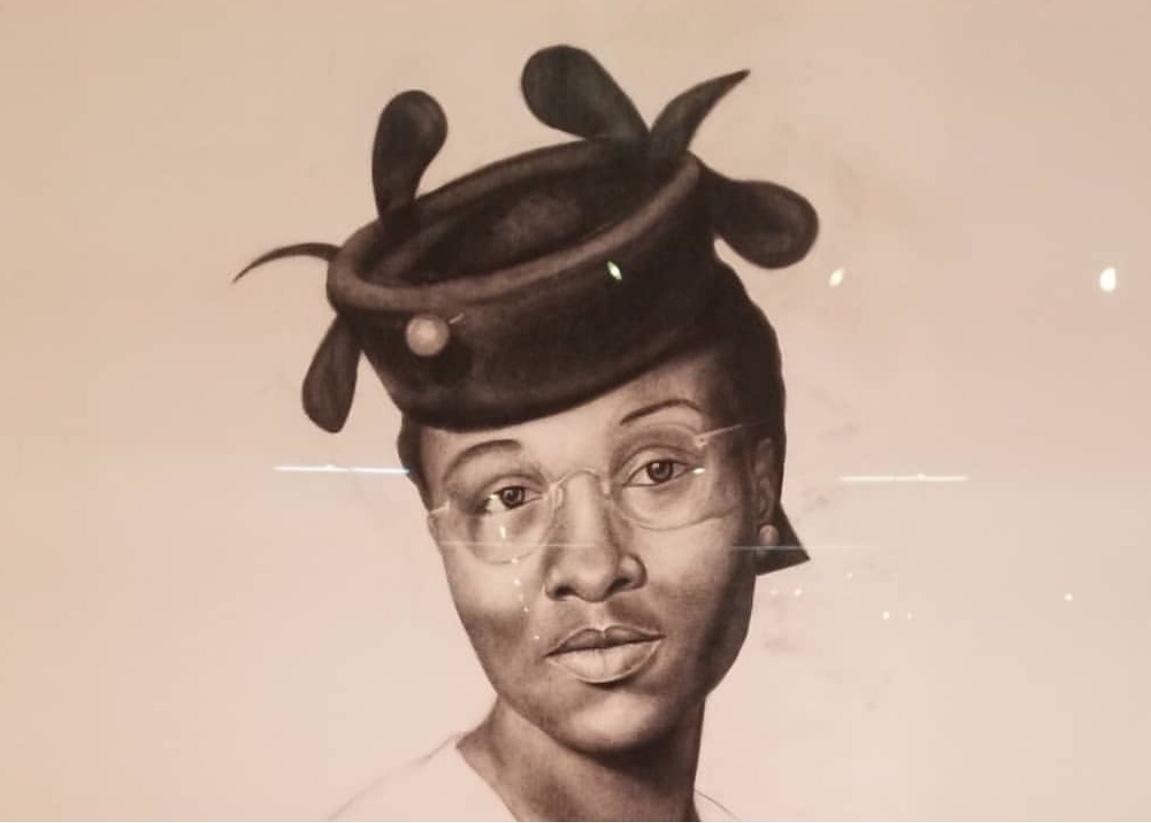This week in Black art, visual art takes up the most recent news in progress. Two museums have instated Black women as figureheads, one for the first time in its history. Los Angeles is doing its part in honoring the influence African Americans have had on its city. Dana Chandlers Fred Hamptons Door 2 will be shown at the Museum of Fine Arts, Boston beginning July 3.

Above: Rhea L. Combs. Photo by Abe Mohammadione.
Rhea L. Combs Named Head of Curatorial Affairs at Smithsonian
Rhea L. Combs has been appointed director of curatorial affairs at the National Portrait Gallery (NPG) in Washington, D.C., in charge of exhibitions, acquisitions and collection, as well as overseeing the curators and conservation departments and collaborating directly with the History and Public Engagement divisions. She also will be a member of the NPG’s executive committee, which is a subset of the NPG’s members and which works on museum-wide projects. Combs hails from the Smithsonian Institution’s National Museum of African American History and Culture (NMAHC), where she has been the curator of the Earl W. and Amanda Stafford Center for African American Media since 2012. On May 10, she will formally assume her new role.
Combs was active in the planning and implementation of programming for the 2016 grand opening of the NMAHC. While there, she produced the traveling exhibition, Rising Up: Hale Woodruff Murals at Talladega College. Both displays were on show in the NMAAHC’s display gallery at the National Museum of American Art.
Dr. Brandon Brame Fortune, The National Portrait Galleries’ former director of curatorial affairs, then known as “chief curator,” resigned last spring after 33 years of operation. According to the museum, the title was adapted to show reverence for Native Americans. The rank, duties and obligations remain unchanged.
Combs created the NMAAHC’s first photography show, Everyday Beauty: Photographs and Film from the Permanent Collection, (2018-19), and curated the multi-volume photography book series, Double Exposure.
She previously taught visual culture courses at Emory University, where she earned her doctorate in gender-focused film history, and at Chicago State University and Lewis & Clark College. As an independent curator, she has collaborated with the Schomburg Black Culture Center in Harlem, the Institute of Contemporary Art in Chicago, and the Institute of Contemporary Arts in London, and in her early career, she worked at the Spelman Museum of Fine Art in Atlanta.

Above: Eunice Bélidor
MMFA’s First Black Curator Instated
Eunice Bélidor has been appointed the Gail and Stephen A. Jarislowsky Curator of Québec and Canadian Modern Art (1945 to today) at the Montréal Museum of Fine Arts, making her the museum’s first Black curator.
Born in Montréal, she is a curator, letter writer, critic and scholar, as well as the 2018 winner of the TD Bank Group Award for Emerging Curator from the Hnatyshyn Foundation. Her work focuses on contemporary Haitian art, apparel, design, and correspondence; in her (limited) spare time, she also focuses on post-Black studies, feminism and architecture.
Bélidor has a bachelor’s degree in art history from Concordia University in Montréal, a master’s in art history and visual culture, and a doctoral certificate in curatorial studies from York University in Toronto. Her work has appeared in Canadian Art, Hyperallergic, the Journal of Curatorial Studies, Invitation, InCirculation and Espace Art Actuel, and she has arranged and curated several exhibits both nationally and globally.
Bélidor is a member of the Concordia President’s Task Force on Anti-Black Racism, and she co-curated the display Over My Black Body, which debuted in Berlin in 2018 and then moved to Montréal’s Galerie de l’UQAM, and which she defines as a “celebration of Black life and community.”
She has shown her work at BAND Gallery, The Power Plant (Toronto), and Articule (Montréal). She was formally the director of the FOFA Gallery at Concordia University.

Above: St Elmo’s Village. Photo by Lillian Kalish/LAist
Los Angeles + Getty to Highlight Afro-American History
Only three percent of the approximately 1,200 architectural monuments spread across Los Angeles commemorate African American historical sights, despite the L.A. African American community’s lengthy and extensive history and the contributions they have made, which go hand in hand with the city we see now.
The Los Angeles African American Historic Places Project, which will last three years, will see the Getty Conservation Institute collaborate with L.A.’s City Planning Office of Historic Resources (OHR) to develop a neighborhood outreach initiative. The Getty and OHR are in the process of employing a project lead for the new venture, as well as providing paid internships to young heritage, restoration and planning students to help with the project. The two institutions are planning to collaborate with other civic groups to unearth various neighborhoods’ little-known backgrounds.
The initiative also will dedicate time to investigating the position of institutional bias in L.A.’s architectural preservation policies. For almost two decades, the City of Los Angeles and the Getty Conservation Institute have collaborated on local heritage programs. SurveyLA, a citywide study of historic sites completed from 2010 to 2017, was one of their collaborative projects. SurveyLA covered the whole city of Los Angeles, encompassing over 880,000 legal parcels in a region of about 500 square miles, and listed resources ranging roughly from the years 1865-1980. The SurveyLA data was used to build HistoricPlacesLA in 2015, a website that helped the public visit these places.
The announcement follows the recent collaborative purchase of the archives of Paul R. Williams, one of the 20th century’s most important African American architects, by the Getty Research Institute and the University of Southern California School of Architecture. Several Williams structures, including the 28th Street YMCA and Golden State Mutual Life Insurance Company, are now declared historic landmarks in Los Angeles. The project also supplements the Getty Research Institute’s African American Art History Initiative, which reflects on the postwar art and cultural tradition of African American and African diasporic artists.

Above: Fred Hampton’s Door 2 by Dana Chandler
Chandler Acquisition Sets a Landmark at Boston’s MFA
Dana Chandler’s history with the City of Boston’s Museum of Fine Arts spans over 50 years. On January 15, 1970, he compiled a letter to the MFA’s board of directors and then-director Perry T. Rathbone, criticizing them for the absence of Black artists on their walls. He named it, “A Proposal to Eradicate Institutional Racism at the Boston Museum of Fine Arts.”
Others in the artistic culture, including National Center of Afro-American Artists (NCAAA) member Elma Lewis and NCAAA curator Edmund Barry Gaither, who became a consultant to the MFA, supported Chandler’s call for diversity and equality.
Chandler’s influence aided the creation of a group show titled Afro-American Artists: New York and Boston at the MFA in the spring of 1970.
Now, five decades later, MFA’s Curator of Contemporary Art Liz Munsell says the museum’s purchase of its first Chandler work brings his tale in Boston to its climax, and the Museum of Fine Arts revealed their acquisition of Fred Hampton’s Door 2 yesterday, on Chandler’s 80th birthday. It is the artist’s first work to be acquired by the MFA.
Chandler produced the work in 1974, and its cultural significance is still relevant today, particularly with the increased visibility of the Black Power revolution as a result of recent films such as The Trial of the Chicago 7 and Judas and the Black Messiah. The work is a bullet-riddled door with a frame painted in the Pan-African flag’s iconic green and red, which reflects unity for people of African descent. The artist splattered more red paint around his blood-colored wooden canvas. He also attached a pale blue seal with four white stars and the words “U.S. Authorized” to the top right corner of the door.
Since the spring of 2018, curator Liz Munsell has been collaborating with Chandler and his daughter Dahna, who is also his agent, to render the purchase. Chandler’s art will be shown alongside 50 other newly acquired pieces as well as unrecognized holdings in the museum for the show, New Light: Encounters and Connections, which opens on July 3. The audience will be able to see Fred Hampton’s Door 2 for the first time at the MFA.
New Light: Encounters and Connections spans societies, geographies and even centuries, presenting more than 50 pieces of art from the MFA’s archive, several of which are on display for the first time. The exhibition is divided into 21 interviews, in which a new addition to the collection is juxtaposed with one or two items collected earlier in the Museum’s existence. Work by emerging as well as local or Boston-born artists, such as Eben Haines, Stephen Hamilton, Tomashi Jackson, Lavaughan Jenkins, and Alison Croney Moses, is included among the contemporary items.
– Compiled by Sumaiyah E. Wade











